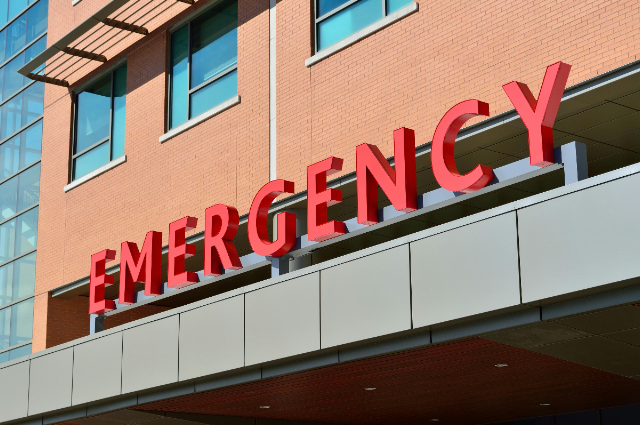
Union Minister Nitin Gadkari has introduced a significant initiative called the "Cashless Treatment" scheme. This scheme is designed to provide financial assistance for road accident victims, ensuring that they receive necessary medical care without the immediate burden of expenses. The government will cover treatment costs up to Rs 1.5 lakh for the first seven days of hospitalization.
Rise in Vehicle Registrations and Road Accident Data in India
Increase in Registered Vehicles
In 2020, the number of registered cars and motorized two-wheelers (MTWs) in India was 43.73 million and 243.5 million, respectively. However, these figures overrepresent the actual number of vehicles on the road. This discrepancy occurs because vehicles that are no longer in use, due to age or other factors, are still remaining in the official records. It is estimated that only 50% to 60% of the registered personal vehicles are actually operational.
Growth in Household Vehicle Ownership
Census data and population-level surveys indicate a significant rise in vehicle ownership among households. Between 2008 and 2017, the percentage of households owning cars and MTWs more than doubled. During this period, approximately 1.5 million cars and 10 million motorcycles were registered each year, corresponding to 0.6% of new households acquiring a car and 4% acquiring a motorcycle annually. By 2017, about 7% of households owned at least one car, while 45% owned at least one motorcycle. Meanwhile, bicycle ownership has remained steady at 40% to 45%.
Underreporting of Road Deaths
There is evidence suggesting that road deaths in India are significantly underreported, though the extent of this underreporting is unclear. The 'Global Burden of Diseases, Injuries, and Risk Factors Study' estimated that in 2019, between 159,343 and 250,315 deaths were caused by road injuries in India, which is 40% higher than the government's reported figures. A study on National Burden Estimates of Healthy Life Lost in India using the Sample Registration System (SRS), reported 275,000 road deaths in 2017, 82% higher than the government’s figure of 150,785 for that year.
Inadequate Reporting of Non-Fatal Road Traffic Injuries (RTIs)
Reports from the Ministry of Road Transport and Highways (MORTH) and the National Crime Records Bureau (NCRB), based on police data, show that the official estimate for non-fatal RTIs in 2021 was 371,884. However, this figure likely underestimates injuries requiring hospitalization by a factor of five and all injuries by a factor of twenty. Therefore, these data should not be relied upon for studying the epidemiology of non-fatal RTIs in the country.
Key Features of the Scheme
Under this scheme, the government will take care of the medical expenses if the accident is reported to the police within 24 hours. This prompt reporting is crucial for the victim to qualify for the cashless treatment benefits. The intention behind this requirement is to ensure timely medical intervention and proper documentation of the incident.
Support for Families of Hit-and-Run Victims
Additionally, the scheme includes a provision for ex-gratia payment to the families of deceased victims in hit-and-run cases. The government will provide a financial assistance of Rs two lakh to the families of those who lose their lives in such unfortunate incidents. This measure aims to offer some relief to the grieving families during their time of grief.
Minister's Statement on the Initiative
Explaining the details of the scheme, the Union Minister of Road Transport and Highways stated, "We have started a new scheme - Cashless Treatment. Immediately after an accident occurs within 24 hours, when the information goes to the Police we will provide expenses for seven-day treatment of the patient who gets admitted or a maximum of up to Rs 1.5 Lakhs for treatment. We will also provide Rs two lakh for the deceased in hit-and-run cases."
This initiative reflects the government's commitment to improving road safety and providing immediate support to accident victims and their families, thereby reducing the financial and emotional burden they face during such emergencies.
Emphasis on Road Safety by the Government
Union Minister Nitin Gadkari has emphasized that road safety is the government's highest priority. He highlighted the alarming statistic that nearly 1.80 lakh people lost their lives in road accidents in 2024. Among these, 30,000 fatalities were due to individuals not wearing helmets, a simple yet crucial safety measure.
Key Statistics Highlighting the Gravity of the Situation
Gadkari stated, "In the meeting, the first priority is for road safety, and in the year 2024, 1.80 lakh deaths have occurred due to road accidents. Of these, 30,000 people died because they were not wearing helmets. Additionally, 66% of these accidents involved individuals aged between 18 to 34," underscoring the vulnerability of young adults in traffic incidents.
Tragic Loss of Children Due to Poor Infrastructure
The Minister further pointed out the tragic deaths of 10,000 children in road accidents, attributing these fatalities to inadequate arrangements at entry and exit points near educational institutions like schools and colleges. "10,000 children have died due to a lack of proper arrangements at the exit-entry points in front of our schools and colleges. We have also implemented rules for autorickshaws and minibuses transporting school children, as there have been a significant number of deaths due to these vehicles. After identifying all the black spots, everyone decided together that we would try to reduce it," he explained.
Collaborative Efforts for Improved Transportation Policies
This announcement came after a meeting chaired by Gadkari, which included Transport Ministers from all states and union territories. Held at Bharat Mandapam in Delhi, the meeting aimed to foster collaborative efforts between the union and state governments to discuss and improve transportation-related policies. This initiative reflects a concerted effort to reduce road accidents and fatalities through better infrastructure, stricter enforcement of safety regulations, and enhanced collaboration across various government levels.
. . .
References:
